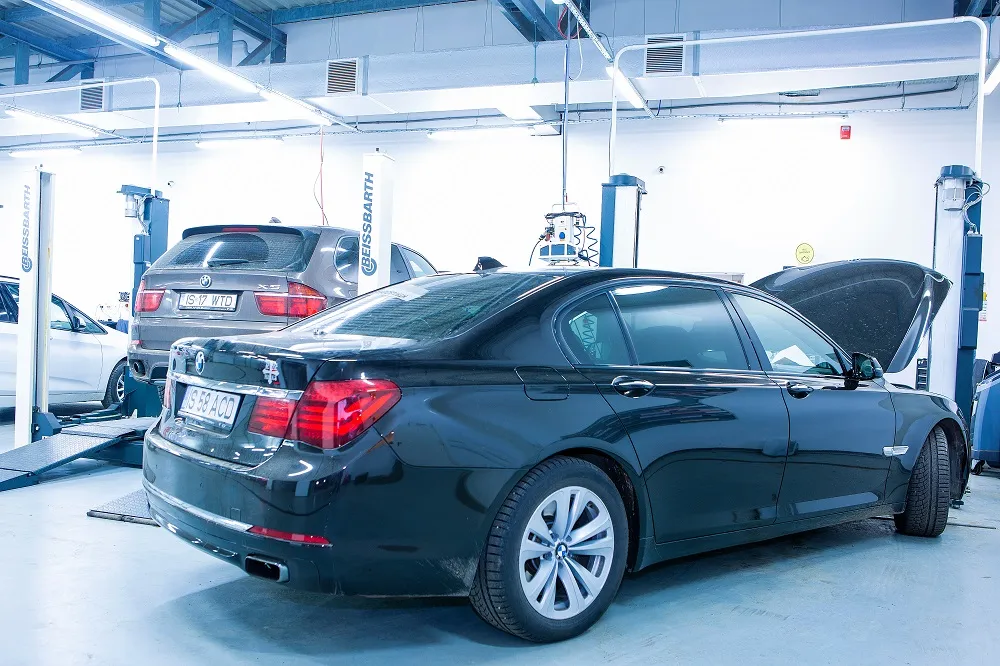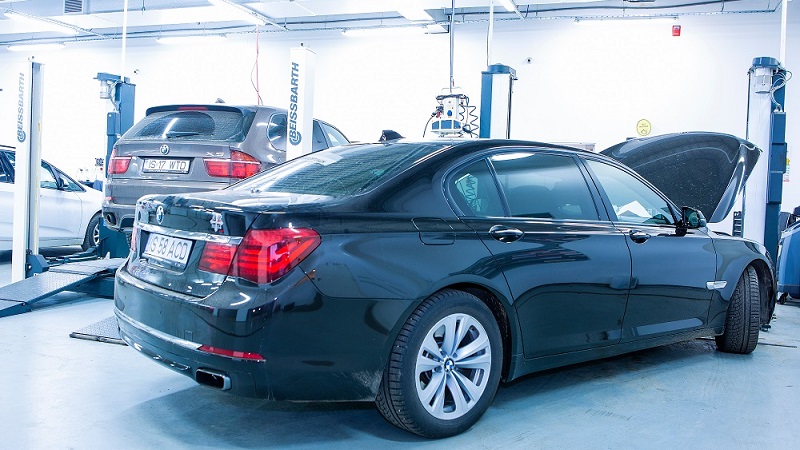As automotive emission regulations become stricter, manufacturers are forced to design safety measures that keep them in check. One such system that has been around for the last few decades is the Evaporative Emission Control System (EVAP), which prevents gasoline vapors from the tank or other parts of the fuel system from escaping into the atmosphere.
A Leak Detection Pump (LDP), also known as a Diagnostic Module for Tank Leakage (DMTL), is a vital part of this system as it helps the EVAP find if there are any leaks. When a leak is detected, the check engine light on your dashboard will light up; and this is a problem that thousands of owners have experienced since BMW first started using the tech in 1998.
Since federal laws demand a leak detection pump to monitor emission levels, it’s an essential part of your car. In this guide, we’ll look at how a DMTL pump works, error codes to look out for, and what you should do if it fails.

What is a Leak Detection Pump (DMTL Pump)?
As its name suggests, a leak detection pump detects whether there’s a vapor leak along any part of the fuel system. It works as part of the EVAP, which collects these vapors with charcoal canisters, and reintroduces them into the combustion chamber.
An LDP, or DMTL pump, comprises several components, including a vent valve, main diaphragm, a vacuum solenoid, a sensor, and multiple one-way valves. The system works by using an engine vacuum to move the diaphragm and detect if there’s a leak. When the pressure in the pump reaches a particular limit, it will stop the movement of the diaphragm and shut the vent valve at the bottom of the pump. This seals the system from the loss of pressure.
The ECU is constantly monitoring the frequency of the movement of the diaphragm, which is caused only if there is a change in pressure. If it finds that this is the case, it will trigger the check engine light on your dashboard. If the pressure remains constant, the vacuum solenoid is activated, releasing the pressure from the EVAP system. This forced the diaphragm to push on the vent valve, enabling fresh air to enter the system again.
Any change in the pressure reading means that there is a leak in the system. Depending on how much the pressure drops, the ECU will be able to judge if there’s a small leak or a larger one, triggering the appropriate error code.
How to Tell If Your Leak Detection Pump is Failing?
Unfortunately, there’s no way to tell if your leak detection pump is failing, and you will know only once the check engine light on your dash illuminates. This will happen as a failed LDP will no longer be able to monitor leaks. If this happens, your car won’t pass any emission test you put it through, so you must rectify it. That being said, the tricky part is that a lit check engine light does not always imply that the LDP has failed.
One of the ways to diagnose if a faulty leak detection pump has triggered the check engine light is to use an OBD-II device and check for what error code it shows. If you don’t have access to one, you can also run a bench test. To do so, you will require:
- Steady source of 21-inch vacuum
- Jumper leads to connect the LDP
- 12V power source to activate the LDP solenoid
- Latex balloon to fit over the canister of the LDP
Once you have these components, remove the LDP from the affected vehicle (we’ve covered how to do this below). Then attach the jumper cables to the leak detection pump’s connector and the power source. Lastly, connect the vacuum source to the pump and cover the canister side with the latex balloon.
Now that everything has been set up, toggle the power source on and off to mimic the engine vacuum and move the diaphragm inside the pump. This will cause the balloon to inflate. After about 30 seconds, the balloon should stop getting bigger. Stop triggering the solenoid with the power source and check if the balloon loses pressure. If it does, it means that there is a leak in the system.
Can You Still Drive With a Faulty Leak Detection Pump?.
Technically, you will still be able to drive even if your car’s leak detection pump has failed, as the part plays no role in the normal functioning of the engine. It’s also worth noting that the LDP runs only once the engine has been turned on or off and checks only for vapor leaks and not liquid leaks.
So, if the check engine light on your car is triggered, it’s worth having it checked before assuming that the cause is the LDP. If you narrow down the cause of the check engine light to be a faulty LDP, you can still drive your car without causing any further damage. However, your vehicle will not pass an emissions test, which will get you into trouble with the law.
Related Trouble Codes

Speaking of Check Engine Lights (CEL), there are multiple Diagnostic Trouble Codes (DTC) that you may see if there is an issue related to your leak detection pump. Here are some of the more common ones that BMW owners have seen:
P1447 — Diagnostic Module Tank Leakage (DM-TL) Pump Too High During Switching
P2402 — OBD-II code for the ECU detecting that the EVAP has a high voltage signal return
P0456 — OBD-II code when the ECU has detected a 0.020” leak in the EVAP
P0442 — OBD-II code when the ECU has detected a 0.040” leak in the EVAP
P0455 — OBD-II code when the ECU has detected a large leak in the EVAP
OEM or Aftermarket?
An aftermarket LDP will likely cost you less than an OEM unit, but it’s also less reliable, and you may run into issues with it sooner. In most cases, you’ll also find that the cost of diagnosis and labor adds up to more than the price of the part itself.
So carrying out an inspection and replacing the part by yourself will save you some money, allowing you to get your hands on a reliable OEM part. The Bosch 261222018 Self-Diagnosing Module, for instance, is a trusted part that several BMW owners have equipped their cars with after the factory LDP has failed, and it’s stood the test of time with ease.
Is DMTL Pump Difficult to Replace?
The DMTL pump is not a hard part to replace and isn’t a highly technical job. That said, it can be a tricky part to reach, and having the right tools with the ability to prop the car up on a ramp does make the job easier.
Typically, the leak detection pump is located behind the rear wheel on the passenger side of the car. On some BMW models, it may be found on the vehicle’s driver’s side. Elevate the vehicle using a lift or a jack stand to access it.
- Disconnect the negative terminal of the battery to prevent electrical damage
- Remove the plastic panel behind the rear wheel, and you should gain access to the LDP and the EVAP canister that holds the charcoal filters.
- You’ll see a couple of vacuum lines connected to the pump, canister, and electrical connector. Disconnect them.
- The LDP is connected to the canister end with a few screws. On the BMW E90, for instance, there are three T-10 Torx screws. Unscrewing them will disconnect the pump from the canister.
- You can now bench test the LDP and replace it with a new one if required.
- Reinstall the vacuum lines and electrical connector,
- Check the system with an OBD-II device again to see if the error codes have been rectified
Find Parts that Best Match Your Vehicle!
Whether it’s a leak detection pump that you’re after, or something completely different, BMWs work best when you feed them genuine or OEM parts. We’ve built our catalog to provide you with the largest selection of such quality parts. All you need to do is head over to the Bimmers.com shop section, input your car’s data and search for the part you need!





